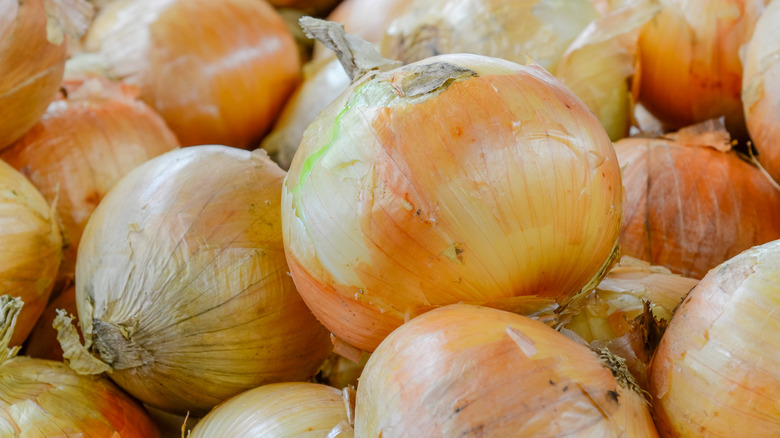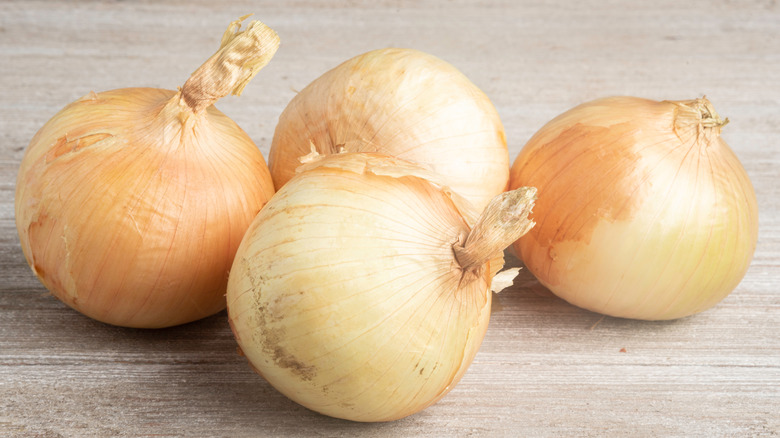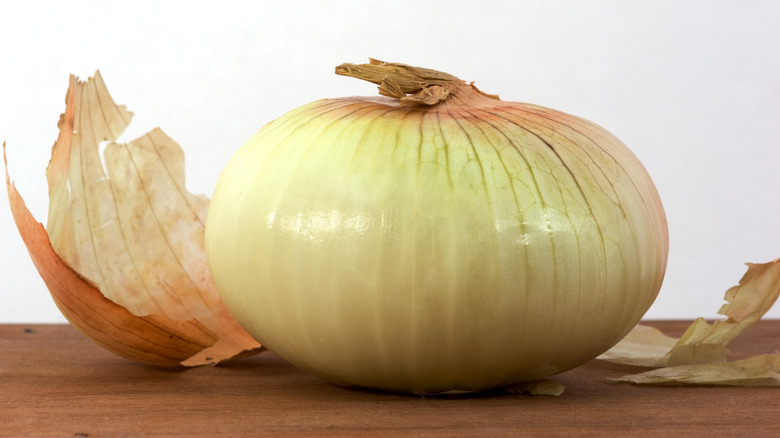Why Vidalia Onions Were Once One Of The Most Coveted Vegetables
You can make some truly incredible dishes out of simple ingredients, but when it comes to price and availability, it's an undeniable fact that all foods are not created equal. There are a number of reasons why a particular food may become more or less desirable, most of which can be uncovered by examining the facts, both past, and present.
The reason saffron is so expensive is that it is a difficult crop to grow, and saffron farmers are pushed to their limits reaping the herb during the limited harvest window. However, that's a more modern example. Vocal Media tells us that lobster, now a staple of fine-dining establishments everywhere, was once so reviled that laws were enacted that barred prisons from feeding their inmates the shellfish more than two times a week. Poor Japanese fishermen pioneered the art of sushi making as a method of meat preservation.
The Vidalia onion, a common piece of produce that you're almost certainly familiar with, has the reverse backstory. At one time, Vidalia onions were an incredibly hot commodity.
Vidalia onions grew out of Depression-era Georgia
Your glass of bubbly is only true champagne if it is made from grapes harvested in the Champagne region of France. Similarly, if your onion wasn't grown in a handful of counties, which are all located near the vegetable's birthplace, Vidalia, Georgia, it is not a true Vidalia (per Explore Georgia). To declare otherwise would be in violation of the 1986 Vidalia Onion Act.
The first Vidalia onions were harvested in 1931 by farmer Moses Coleman (via Vidalia Onions.com). He hadn't intended to cultivate anything novel, but when he harvested his onion crop that year, he realized that they were sweeter than usual. He decided to sell them, and though the Vidalia onion was not an immediate smash success, Moses was eventually able to sell his crop. He made $3.50 for 50 pounds of onions, which was a considerable amount in that era. From there, the Vidalia onion's popularity exploded.
The sweet science of Vidalia onions
According to Vidalia Onions.com, the success of Coleman's crop inspired a number of other farmers to also try their hands at planting the sweet vegetable. The onions grew in popularity at a heavily-trafficked farmer's market commissioned by the State of Georgia, and in the 1970s, Vidalia onions started being marketed to consumers nationwide. In the United States and Canada, the annual Vidalia production is roughly 200 million pounds, per Martha Stewart.
Morning Ag Clips, citing Daniel Jackson of the University of Georgia's Crop Quality Lab, explains that the Vidalia onion's excess sweetness is the result of the low sulfur content in some Georgian soil. Despite the myriad factors that can affect a harvest, farmers work tirelessly to ensure a consistently sweet crop.
Though Vidalia onions are widely available today, this dedication to a quality crop may be one of the reasons why they are desirable in the culinary sphere. Chef Kevin Gillespie, in an interview with The Hype Magazine, tells us that the Vidalia onion's uniquely sweet flavor profile can add a lot of complexity to dishes. As an added bonus, chopping Vidali onions might not even make you cry, and that's something we can appreciate.


